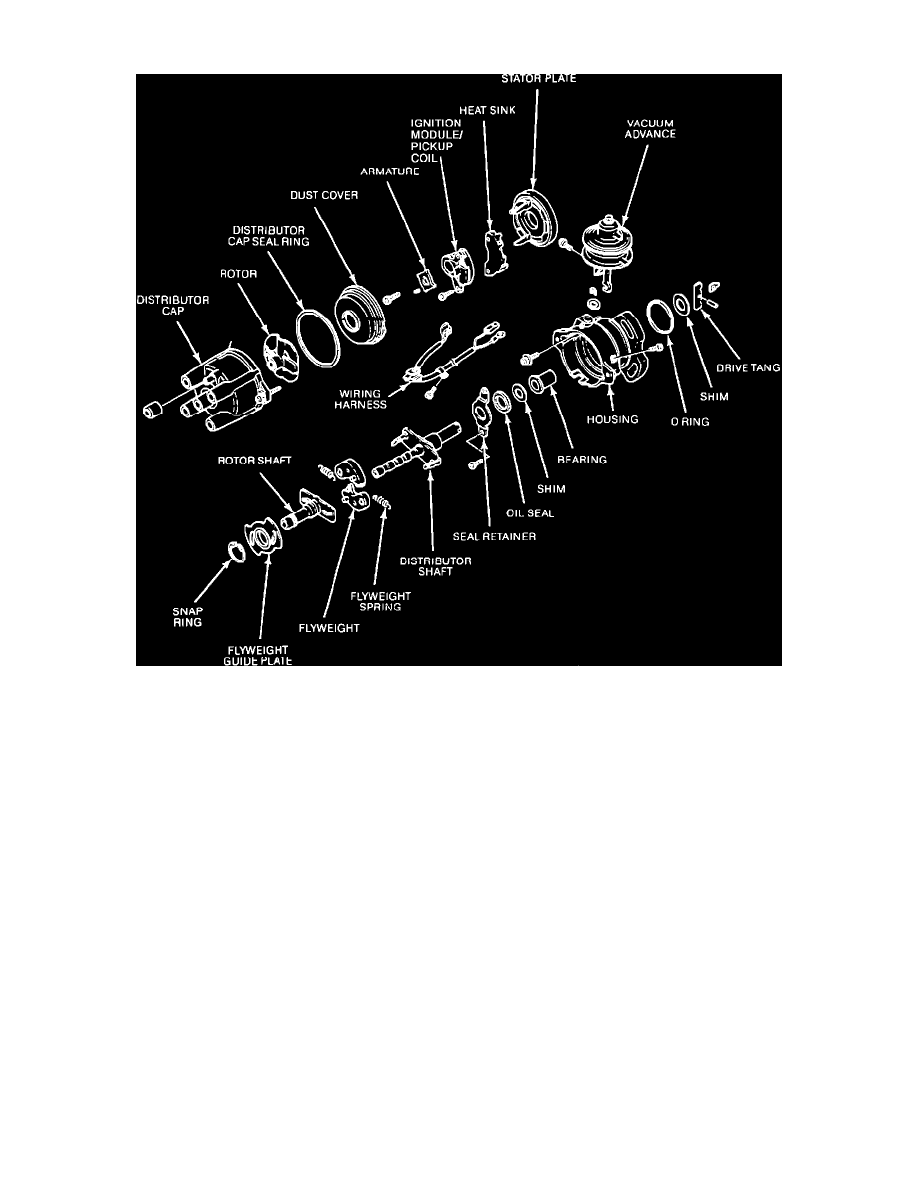Festiva L4-81 1.3L SOHC EFI (1989)

Ignition Control Module: Description and Operation
Exploded View of Distributor Assembly
DISTRIBUTOR
The distributor is mounted on the rear (flywheel end) of the engine cylinder head, and is direct-driven by the camshaft at one-half crankshaft speed. An
off center drive tang pinned to the distributor shaft engages with the camshaft in only one position. Rotation is counterclockwise. Housed in or on the
distributor are the centrifugal advance, vacuum advance and ignition module/pickup coil.
The crankshaft angular position is sensed by a pulse generator, consisting of a four-lobed armature mounted on the shaft and rotating in the field of a
two-pole permanent magnet stator. As the armature lobes pass the stator poles, magnetic pulses are generated, which induce weak currents in a pickup
coil, which is part of an electronic ignition module. The module controls the current through the ignition coil primary winding. The module turns the
current on between firing points to build up a magnetic field around the coil windings. It then turns the current off on a signal from the pulse generator
and pickup coil.
IGNITION COIL
The ignition coil is a pulse transformer designed to step up primary voltage of 12V to 25,000-35,000V. It is composed of a primary winding, secondary
winding and a core of soft iron.
The primary winding is made up of approximately 200 turns of heavy wire (approximately No. 18 gauge). The secondary winding is wound around the
soft iron core, and the primary winding surrounds the secondary. The purpose of the core is to concentrate the magnetic field.
The coil is oil filled (for better cooling capabilities) and is energized when the position of the ignition switch is at ON or START. It contains a positive
(Batt.) and negative (Tach.) terminal, as well as a single secondary terminal.
It transforms the battery voltage to the high secondary voltage (about 28kv) every time it receives an Ignition Diagnostic Monitor (IDM) signal from the
ignition module.
IGNITION MODULE/PICKUP COIL
